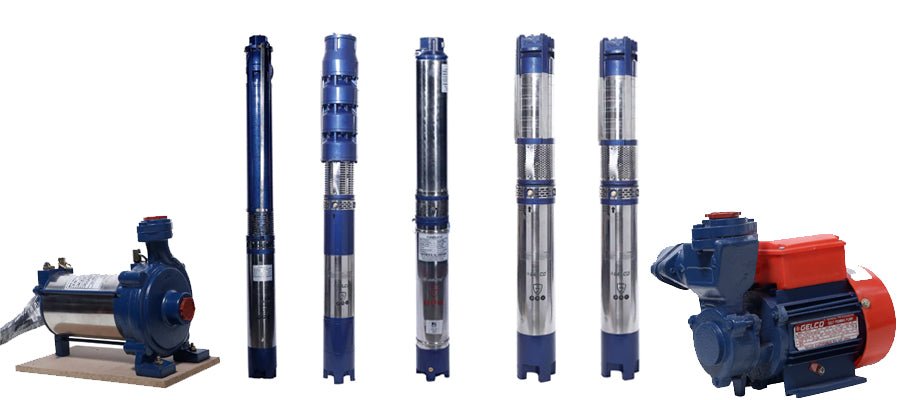Positive Displacement & Dynamic Pumps: A Clear Difference
Our last blog discussed the Positive Displacement Pumps and the Dynamic Pumps as two different types of irrigation pumps available. Today, let's discuss the two types in more detail by drawing a clear difference between the two. As both types have a similar function of moving fluids from one end to the other, a clear difference between them will inform you of their applications and help you make the right choice as per your requirement.
Difference between Positive Displacement & Dynamic Pumps:
Fluid Transfer Mechanism: Both the pump types have one function to move the fluids from one end to the other. However, the Positive Displacement Pump uses mechanical energy to trap the fluid water from one end i.e. the suction side by the rotary or linear motion and then displaces or pushes the fluid out through the discharge outlet. Whereas the Dynamic Pump uses the centrifugal force to create velocity in the fluid which is then converted to pressure. When the kinetic energy is decreased, the pressure will increase and this difference in pressure drives the fluid out through the discharge valve.
Types of Fluids Transferred: Based on the working mechanism, each pump works better with a specific fluid type. For instance, the Positive Displacement Pump is ideal for fluids with higher viscosity and also with shear-sensitive fluids which Dynamic Pumps aren’t. Dynamic Pumps have a spinning impeller that draws the fluid into the pump, any thicker fluid will cause frictional loss which can damage the impeller whereas, in the case of a shear-sensitive fluid, the force applied by the impellers possesses a risk to the fluid. They excel at pumping thin liquids with low viscosity levels in contrary to Positive Displacement Pump, which excels at pumping high-pressure viscous fluids.
Fluid Requirement: A Dynamic Pump requires a minimum level of fluid to kickstart the pressurized control, a reason why they are always preferred to be submerged in water. Whereas the Positive Displacement Pump can well handle dry intervals and doesn’t require any minimum levels of fluid.
Pump Performance: A major difference in the performance of the two pumps is the difference in flow rate. The fluids are pushed out of a Positive Displacement Pump at a constant flow rate despite any alterations in the pressure whereas the flow rate of a Dynamic Pump is subject to change based on the pressure.
Common Applications: Seeing the character of the fluids being transferred, a Positive Displacement Pump works well in municipal sewage systems, oil processing centres and manufacturing units dealing with thick pastes and viscous materials. As well, a Dynamic Pump works well in manufacturing units dealing with chemicals, petrochemical and light fuel transfer stations, municipal water and other water supply systems, air conditioners, firefighting, cooling towers, hydraulic control system and domestic appliances. There are applications such as food processing units, irrigating etc. where both the pumps can be an ideal choice.
Hoping you got some clarity in regards to the basic difference between the two Pump types. Whatever pump types you may choose, always remember to procure them from a trusted brand like Gelco Electronics that focuses on providing quality products.















